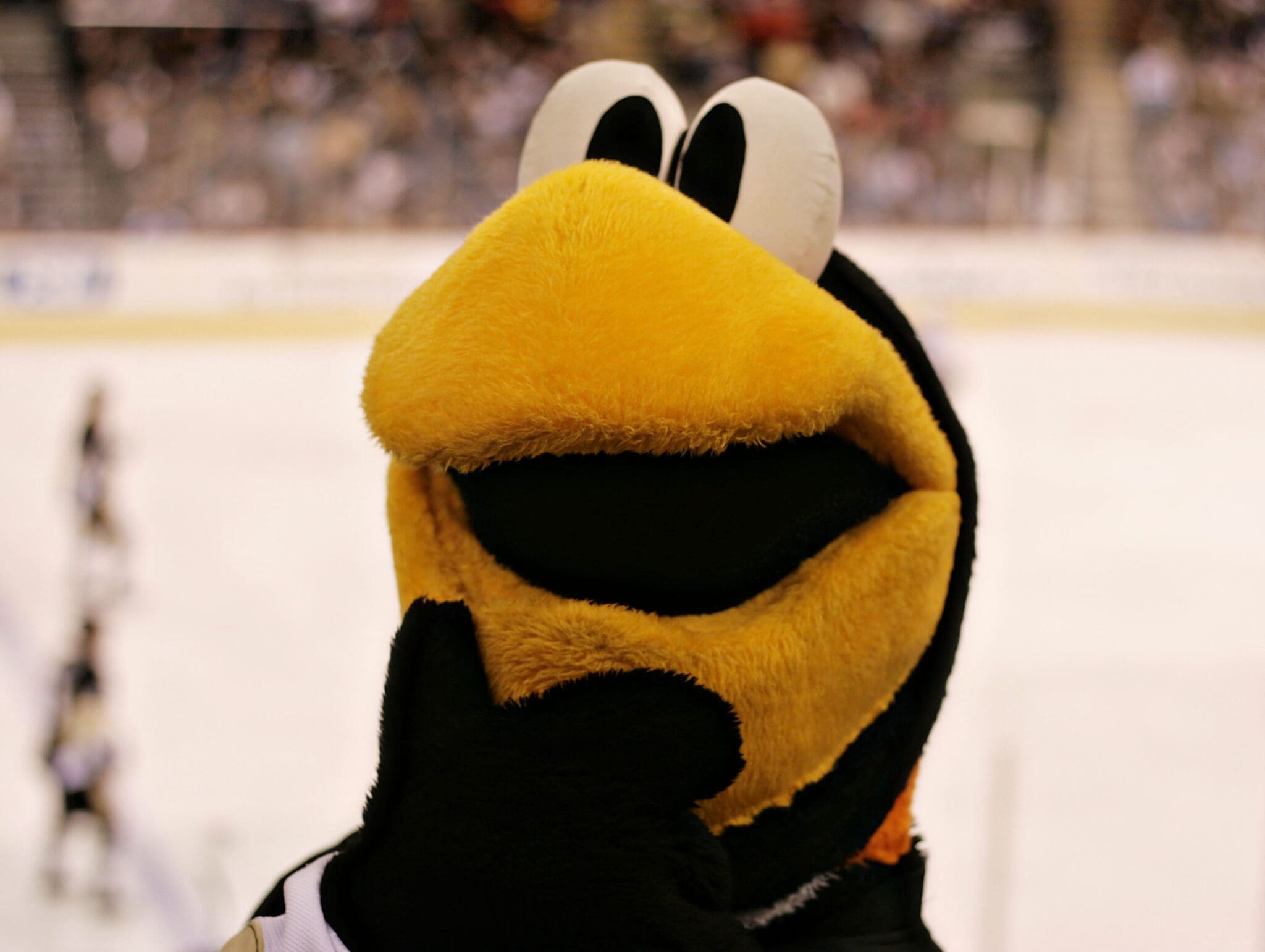Penguins History
History of the Penguins Mascots, from Pete to Iceburgh

Any fan of the Penguins will be familiar with the iconic mascot Iceburgh. But many do not realize Iceburgh was not the first mascot of the Pittsburgh hockey team. In fact, the team’s very first mascot was a real-life penguin.
Penguin Pete
Unfortunately, the Pittsburgh Penguins’ inaugural season in 1967 did not go well. The team finished fifth out of six in its division. There was no doubt about it; the Penguins needed a new strategy to attract the crowds and start winning games. And so, a Humboldt penguin originally from Ecuador was loaned to the Pittsburgh Penguins from Highland Park Zoo, which is now the Pittsburgh Zoo & PPG Aquarium. The newly adopted penguin mascot, who was named Penguin Pete, had special ice skates made for him, by CMM in Canada. And a skater from the University of Pittsburgh taught Pete how to ice skate.
Things have changed a lot since the 1960s. For one thing, you no longer have to travel to arenas to watch hockey games, as many are now available to view on TV or your phone. You can also try out your hockey skills without ever putting on skates by playing a variety of fantastic ice hockey video games like NHL 94 and NHL 20. There are even thrilling online ice hockey slot games, such as Break Away, which is available at Casumo casino. Another thing that has changed since the 1960s is animal welfare. But back in the day, performing animals, like Penguin Pete, were still a common sight.
On February 21, 1968, Penguin Pete made his debut appearance during the second intermission in a game against the Philadelphia Flyers. The Ecuadorian penguin made six more appearances with the Pittsburgh Penguins. His last was on November 16, 1968, when the Penguins took on the New York Rangers. Sadly, Penguin Pete died of pneumonia one week later. It is believed he died because he was not properly cared for by the zoo handlers and the team personnel. His nesting area was believed to be too warm, and that contributed to poor Pete’s death. After Pete the Penguin died, he was sent to a taxidermist. The stuffed mascot was displayed in the Pittsburgh Penguins’ team offices’ lobby until people began to object.
Re-Pete
After the sad death of Penguin Pete, another penguin was hired to take his place. The new Humboldt penguin was cleverly called Re-Pete. He made appearances during the 1971-1972 season, but Re-Pete failed to gain the same notoriety as his predecessor. Times were changing too, and performing animals were no longer welcomed in the way that the original Pete was in the previous decade.
Iceburgh
For twenty years, the Pittsburgh Penguins went without a mascot. But after the Penguins began winning back-to-back Stanley Cup trophies and the team’s support was at an all-time high, head coach Bob Johnson’s wife Martha suggested it was about time the team adopted a new official mascot. And, preferably, he would not be a real-life penguin. Due to Youngstown State University in Ohio holding the rights to a penguin mascot called Pete at that time, the Pittsburgh Penguins decided to hold a naming contest for their new mascot via a local restaurant chain. Iceburgh was the chosen name, and the mascot has since become an integral part of the Penguins team.
Resembling a King Penguin, Iceburgh debuted in the 1992-1993 season. He usually wears a jersey displaying the number 00. Not long after his debut season, in 1995, Iceburgh came to be known and loved by a wider audience after he appeared in the 1995 Jean-Claude Van Damme movie Sudden Death, which was filmed at the Pittsburgh Civic Arena. Since then, Iceburgh has become one of the most famous mascots in the US. He regularly participates in community events and makes an annual appearance at the NHL All-Star Game. He even featured at the opening of the ESPN SportsCenter. Iceburgh remains extremely popular to this day.












